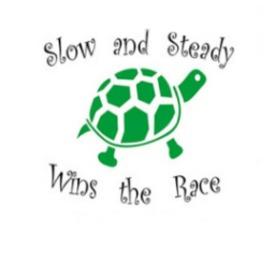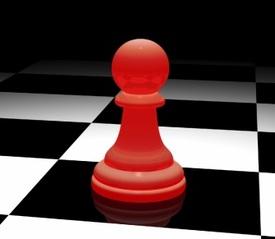We are pleased to announce that as of March 4, 2025, an updated Rich Text Editor has been introduced in the MyFitnessPal Community. To learn more about the changes, please click here. We look forward to sharing this new feature with you!
How to weigh food

sunnymae
Posts: 57 Member
I bought a food scale and some measuring cups and was curious on how to weigh certain foods. Like for instance I had shredded cheese and avocado in my salad. Do I use cups for the cheese or scale ? And for avocado is it grams our ounces ?
0
Replies
-
Weigh everything. You can use the measuring cup to make yourself familiar with the portions, but you want to use the weight in your food diary. Some people use measuring cups for liquids, but I prefer weight. If you are American it may be easier to wrap your head around ounces. Whatever you are more comfortable with and can find entries for. I use them both.3
-
yes weigh it all. even liquids. your scale probably has a button toggle around bteween gr, oz, fl oz and ml. i use the metric stuff because of the smaller increments. the scale is your friend.0
-
Grams and oz are just different ways to say the same thing (different weight units, like inches or centimeters). While it doesn't matter which of the two you use, I think grams are vastly superior because the good entries (like the USDA) will have a 100 gram option and if you weigh out, say, 42 grams, you can log it as .42 of 100 g. Easy, peasy.
Use grams (or oz if you must) for anything solid. For liquids use liquid cup measures (or liter if that's what you have).3 -
dadsafrantic wrote: »yes weigh it all. even liquids. your scale probably has a button toggle around bteween gr, oz, fl oz and ml. i use the metric stuff because of the smaller increments. the scale is your friend.
A scale cannot actually measure fluid ounces and milliliters, as those are volume measures. It just assumes everything has the same density as water (for which 1 gram = 1 milliliter).
That said, the USDA nutrient database does give nutritional information by weight for some liquids (including olive oil and different fat % of milk), and I use those when it's easier to weigh my liquids without dirtying a measuring cup or tablespoon/teaspoon.2 -
All solids (and semi solids) should be weighed.
You may find it easier to weigh off the scale, rather than on to it. Take Peanut butter or yoghurt as examples
- put the Pb jar or yoghurt container on the scale.
- Press tare, to take the scale back to zero.
- As you take food from the jar/container, your scale will show a negative number.
- This is how much you log, and how much you eat (even after licking the knife or spoon you used, which would likely be extra calories if you weighed the Pb or yoghurt on to the scale)4 -
When using a scale, you also have to be active in reading nutrition labels. You will want to make sure what you enter on MFP matches that product you have on hand. Read the back of your cheese and find the serving size and calories. A serving of shredded cheese is usually 1oz or 28g. Whether you use grams or ounces is up to you. I personally use grams because I find it a little more accurate. For something like an apple or an avocado, you'll want to weigh it. What I consider a medium apple and what you consider a medium apple may be different. Weighing is absolute. 50g of apple slices is 50 grams of apple slices. Find a food entry for usda avocado with 100g as it's serving. Let's say you use 34g of avocado in your salad. That would be 0.34 of a serving. If you use 82g, that would be 0.82 of a serving. If you use 145g, 1.45 of a serving. Finding entries with 100g for fresh fruit and vegetables makes the math easier. This is that way I do it anyway.
When you add cheese to your salad, you will put your salad bowl on the scale and tare/zero the scale. This resets it so you can calculate each ingredients separately. Add your cheese, take note of how much you use, and tare the scale again. Add your avocado, take note, tare scale. Add croutons, take note, tare scale. etc. etc. Weighing everything is only half the work! It's important to input everything accurately for the best results. : )
What kind of measuring cups do you have? I hardly use mine anymore since I started using a scale. Even when baking, weighing flour and sugar is much easier than spooning it into cups. I personally weigh liquids too. I first use a liquid measuring cup to calculate how many grams is in a cup of a certain liquid, milk for example. 1 cup of milk measured in a liquid measuring cup is 240g. So, I use 240g as my serving size when pouring milk. That way I don't have to dirty up a measuring cup every time I want cereal.
It's really not too complicated once you get the hang of it! Keep at it~1 -
Okay I asked because I measured my cereal this am. I first used the measuring cup for 1cup. Then I decided to see what it measured in grams. I zero out the scale and the amount I got in grams was far more in calories than what the package stated 1 cup will be in grams. So I was confused on what’s the best option0
-
Okay I asked because I measured my cereal this am. I first used the measuring cup for 1cup. Then I decided to see what it measured in grams. I zero out the scale and the amount I got in grams was far more in calories than what the package stated 1 cup will be in grams. So I was confused on what’s the best option
It's a solid. Weigh it.1 -
Okay I asked because I measured my cereal this am. I first used the measuring cup for 1cup. Then I decided to see what it measured in grams. I zero out the scale and the amount I got in grams was far more in calories than what the package stated 1 cup will be in grams. So I was confused on what’s the best option
It's the moment you realize how much you're really eating compared to what you thought you were eating. The best option is to definitely weigh all you can!3 -
For a good comparison take a weighed once of cereal then put it in a measuring cup. , pour it out into a bowl, and crumble it into smaller bits, make sure you still have a weighed ounce. Then pour it back into the measuring cup. Is there a diference? Now pulverize the crumbs into dust and recheck, and remeasure.
All three are going to weigh the same, but come out differently in the measuring cup. Weight is more reliable, because it is the same no matter what shape the (pure) product is in.1 -
Okay I asked because I measured my cereal this am. I first used the measuring cup for 1cup. Then I decided to see what it measured in grams. I zero out the scale and the amount I got in grams was far more in calories than what the package stated 1 cup will be in grams. So I was confused on what’s the best option
For the nutrition info on the box, the grams are the actually tested values. The manufacturer then estimates how much that would be in cups or number of pieces. And as you've seen, they don't always do a great job!1 -
Okay I asked because I measured my cereal this am. I first used the measuring cup for 1cup. Then I decided to see what it measured in grams. I zero out the scale and the amount I got in grams was far more in calories than what the package stated 1 cup will be in grams. So I was confused on what’s the best option
For the nutrition info on the box, the grams are the actually tested values. The manufacturer then estimates how much that would be in cups or number of pieces. And as you've seen, they don't always do a great job!
Quite often its because they are trying to tell the customer how many servings THEY thing the box should be, and not how many it actually has. To drive sales of course.0
This discussion has been closed.
Categories
- All Categories
- 1.4M Health, Wellness and Goals
- 391.6K Introduce Yourself
- 43.5K Getting Started
- 260.5K Health and Weight Loss
- 176.1K Food and Nutrition
- 47.3K Recipes
- 232.7K Fitness and Exercise
- 444 Sleep, Mindfulness and Overall Wellness
- 6.5K Goal: Maintaining Weight
- 8.6K Goal: Gaining Weight and Body Building
- 153.1K Motivation and Support
- 8.1K Challenges
- 1.3K Debate Club
- 96.3K Chit-Chat
- 2.5K Fun and Games
- 3.3K MyFitnessPal Information
- 16 News and Announcements
- 934 Feature Suggestions and Ideas
- 2.3K MyFitnessPal Tech Support Questions








